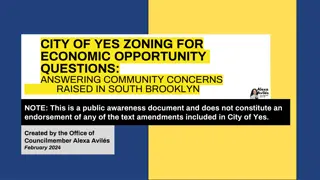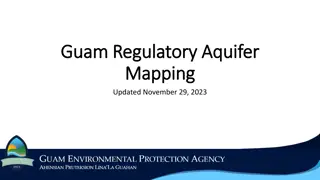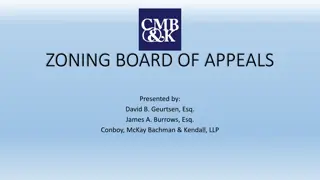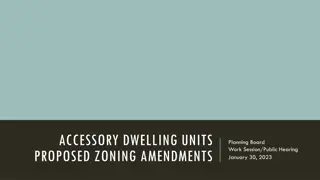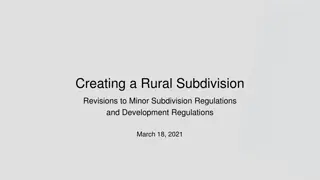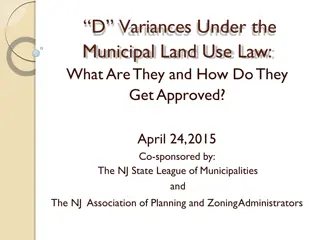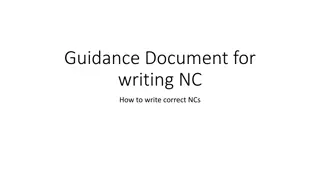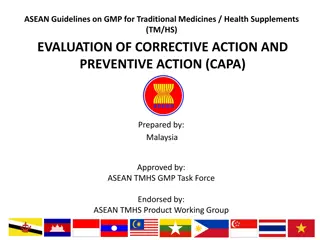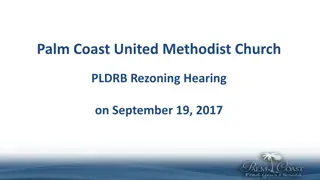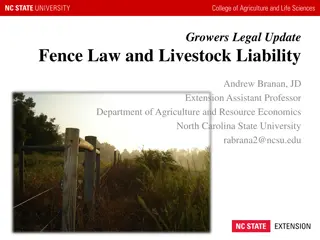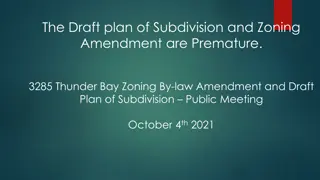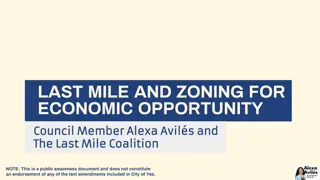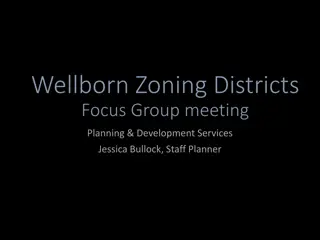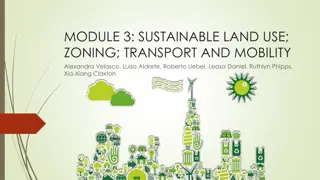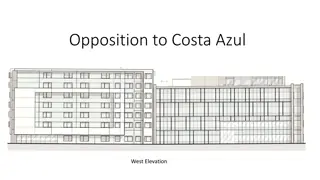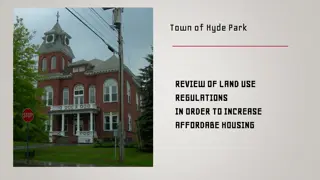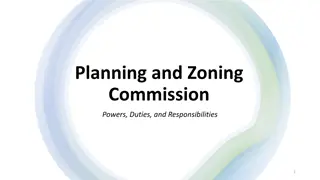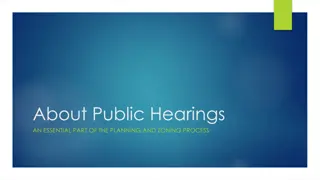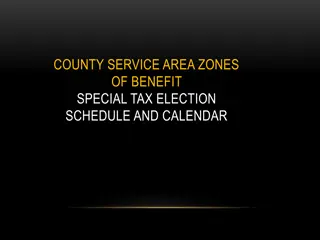Understanding Nonconformities in Zoning Regulations
Nonconformities in zoning refer to structures or land uses that existed legally before zoning changes. Protection laws provide certain rights for nonconforming structures, including regulations on alterations or additions. Section 6 findings play a crucial role in determining permissible alterations to nonconforming structures.
Download Presentation

Please find below an Image/Link to download the presentation.
The content on the website is provided AS IS for your information and personal use only. It may not be sold, licensed, or shared on other websites without obtaining consent from the author. Download presentation by click this link. If you encounter any issues during the download, it is possible that the publisher has removed the file from their server.
E N D
Presentation Transcript
NONCONFORMITIES Zoning Amendment - Garages Zoning and Planning Committee 11/23/2020
Definition - Nonconforming Uses and structures may be nonconforming The use or structure must have lawfully begun or lawfully existed prior to the zoning change Lawfulness means that the use or structure complied with zoning laws at the time the use first commenced or the structure was first constructed
Protections for Nonconformities Massachusetts General Laws Chapter 40A, Sec. 6, provides a baseline level of protection for nonconformities A lawful nonconforming use or structure does not need to comply with requirements of a zoning change A lawful nonconforming use automatically acquires the protections Single and two family residential structures Additional protections State law allows as of right the alteration, reconstruction, extension or structural change of such a structure, so long as the extended or altered structure does not increase its nonconforming nature
Proposed Alteration or Addition If there is a proposed alteration or addition to a nonconforming structure, the City would identify the nature of the nonconformity and make an initial determination as to whether the proposed alteration or addition would intensify the existing nonconformity or result in additional ones If the answer is no , the applicant may proceed in compliance with the current Zoning Ordinance If the answer is yes , the applicant must obtain a Section 6 finding or seek a variance
Section 6 Finding A proposed extension or alteration of a nonconforming structure that would intensify the existing nonconformity may be permitted by the Permit Granting Authority of a municipality The PGA must find that the proposed change, extension or alteration is not substantially more detrimental to the neighborhood than is the existing nonconforming use or structure An alteration that would create a new nonconformity may not be permitted by a Section 6 finding
Variance If a Section 6 Finding is not granted, the current Zoning applies to the proposed alteration and the applicant must seek a variance To create an additional or new nonconformity, an applicant must seek a variance
Newton Current Zoning Nonconformities Section 7.8 The City s current zoning ordinance explicitly provides the floor protection to nonconforming uses and structures required by state law The current zoning ordinance also permits Section 6 findings and designates the Special Permit Granting Authority as the body to make such findings A nonconforming building or structure may be structurally or substantially altered or reconstructed or may be altered or enlarged to permit the extension of a nonconforming use provided that a special permit is obtained. In granting such a permit, the City Council shall make a finding that such change, extension or alteration shall not be substantially more detrimental than the existing nonconforming use to the neighborhood and shall impose such conditions as may be necessary to protect the neighborhood from injury.


